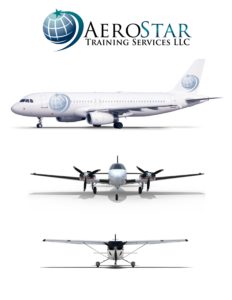Flight School Pipeline Partnerships – what are the advantages?
Paula Williams: Fantastic. Okay, so we know a little bit about the ab initio programs. There’s a question. What are the advantages to my Flight School for partnering with AeroStar as opposed to just creating my own program?
David Santo: That’s a very good question and clearly, we believe in creating a symbiotic relationship. Hold on just one second here. Hold on.
Paula Williams: No problem. Yeah, I know that’s a question that comes up a lot and just to … Actually, we had another question come in that we’ll ask again later but it’s basically about not everyone can become an airline pilot, not everyone has the aptitude. I’d like to talk a little bit more about those screening program so I’ll put a note to talk about that more toward the end of the program. I think we can certainly …
David Santo: I think if I come back and I’m sorry for the interruption, the advantages, I think creating a symbiotic relationship means that you allow people to focus on their core competencies. AeroStar’s core competency is we are a 142 training organization. We employ airline pilots whether they’re active or retired to provide advanced Airbus, Boeing, large transfer category jet training. We are just one small piece of the pipeline. The biggest piece of the pipeline is the 141 or part 61 school. What we are proposing to industry is a partnership that would allow us to work as one single pipeline, a symbiotic relationship so that the student gets the feel of a one-stop shop. It gets them all the way through their general aviation training and delivers them into type rating school and out to industry. The other piece I think that’s important right now, Paula, is the new ATP/CTP course. The new ATP/CTP regulations here in the US make it difficult for 141 and 61 schools to offer students the ATP and the ATP written examination leading up to the ATP. Partnering with a 142 school like AeroStar gives you an outlet to accomplish the ATP. Now that course now requires that students or candidates for the ATP written have to have 30 hours of ground school instruction taught by somebody with at least two years of PIC … I shouldn’t say PIC, it could be SIC as well, but 121 experience and they have to receive at least 10 hours of advanced flight training, simulation training of which four hours can be done in an FTD, six hours have to be in a full motion, full flight simulator. Those have to be provided in an aircraft that weigh more than 40,000 pounds gross takeoff weight. Those are not easily accessed resources and we provide those resources for you through the 142 pipeline.
Paula Williams: Most of the 141 and 61 schools don’t just have one of those sitting on the ramp.
David Santo: No, the level C, level D devices that are required by the new regulation, those are $10 million plus pieces of equipment and the individuals to teach those courses are also tough to come by. We have Flight School Pipeline Partnerships. We have those resources ready to go. It’s turnkey. We’re available to work with 141 and 61 schools as an outlet for your ATP/CTP or your type rating programs. That gives you the benefit of adding these courses without adding the cost. You can add the course to your curriculum, you can advertise it, you can market it and really, it’s just an affiliate relationship and we create a symbiotic pipeline.
Paula Williams: Right, and then there are also marketing advantages to working together, one of my favorite subjects, and those would be basically you linking and maybe creating some joint materials where you’re splitting the cost or doing some other things that can be more effective and less expensive for both parties.
David Santo: We totally love that, Paula, and that’s one of the things we’d like about with ABCI. If I can make a plug for you guys, is developing synergies where people focus on their core competencies really allows you to excel. You can’t be everything to everybody, you got to specialize if you’re going to be good and we want to be specialist so that we can be the best at what we do. We want to work with other schools that are the best of what they do so together we can provide a wow experience for the customer. That’s what it’s all about, right? It’s not about generating revenue in the front door, it’s about generating qualified trained professional pilots who are wowed by the experience and who wow their employer and their employer then says, “Where did you learn how to fly,” and they come back and they say, “Well, we learned how to fly at Sun State Aviation” or we learned how to fly at IFT or Cochise or any of these awesome schools that we’ve had the privilege of working with in the past.

